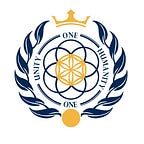Water-filled mattress and bedding can protect cosmonauts from space radiation
Scientists are proposing to use mattresses and other bedding filled with water to protect cosmonauts from radiation. For the eight hours cosmonauts sleep, and their bodies will be heavily protected from radiation if they use the water mattresses and cover themselves with a water blanket. This was reported at the XVII Conference on Space Biology and Aerospace Medicine, which attracted international participants.
This method will reduce the level of total radiation exposure on cosmonauts’ body by more than 20%. The total annual dose for cosmonauts is approximately 200 mSv (millisievert — one thousandth of sievert, a radiation dose unit) and, in any case, does not exceed 300 mSv. For example, on Earth, employees of a nuclear power plant are exposed to about 20 mSv annually. One of the most important things is to protect humans in space from ionizing rays, secondary neutrons that impact high radiation toxicity on the human body. The scientists’ proposal is based on the ability of the hydrogen atoms, which are part of the water molecule, to capture those neutrons.
To resolve the problem of radiation exposure, scientists from the Institute of Biomedical Problems of the Russian Academy of Sciences (IMBP RAS), proposed using mattresses in which water combined with a gel or polyethylene chips is used as a filler. Scientists proposed delivering a mattress to the ISS with a dry substance that absorbs water and preservative on the inside. Secondary water, which is abundant on the ISS, would be used to fill the mattress. Secondary water exists in the form of water vapor, from which water is obtained when the vapor is condensed as cosmonauts exhale. Cosmonauts will introduce secondary water into the mattress through a special valve. Dry matter in the mattress will form a gel upon contact with the secondary water and will become evenly distributed inside. To produce one mattress, about 100 liters of water are needed. The time to prepare it will take about a month. In the same way, it is possible to produce water blankets and pillows.
Scientists from IMBP RAS noted that bedding will not have cooling capacity.
“In technical terms, this is solved in such a way that the surface of the bedding will be equipped with a heat insulating layer to avoid cooling. Moreover, water bedding will be made up of unclean water, and the gel, which is sufficient for it to remain stationary. In this regard, the thermal conductivity of water will be small, since its movements will be limited. This means that the mattress will not have cooling capacity. Nevertheless, each product must be manufactured, tested and evaluated by users,” Head of the Laboratory of Radiobiology of Heavy Ions of the IMBP RAS, Professor Alexander Ivanov told Asgardia Space News.
According to scientists, another special place in the system of increasing the radiation resistance of cosmonauts should be taken by drinking water with new functional properties. Of great interest in this regard is light-isotope water and water with an adjustable and optimized mineral composition. In addition, the possibility that the preservatives of drinking water, including silver ions, can enter the body of cosmonauts should be excluded. Silver ions are heavy metals that are known to increase the pathogenic effect of ionizing radiation.
